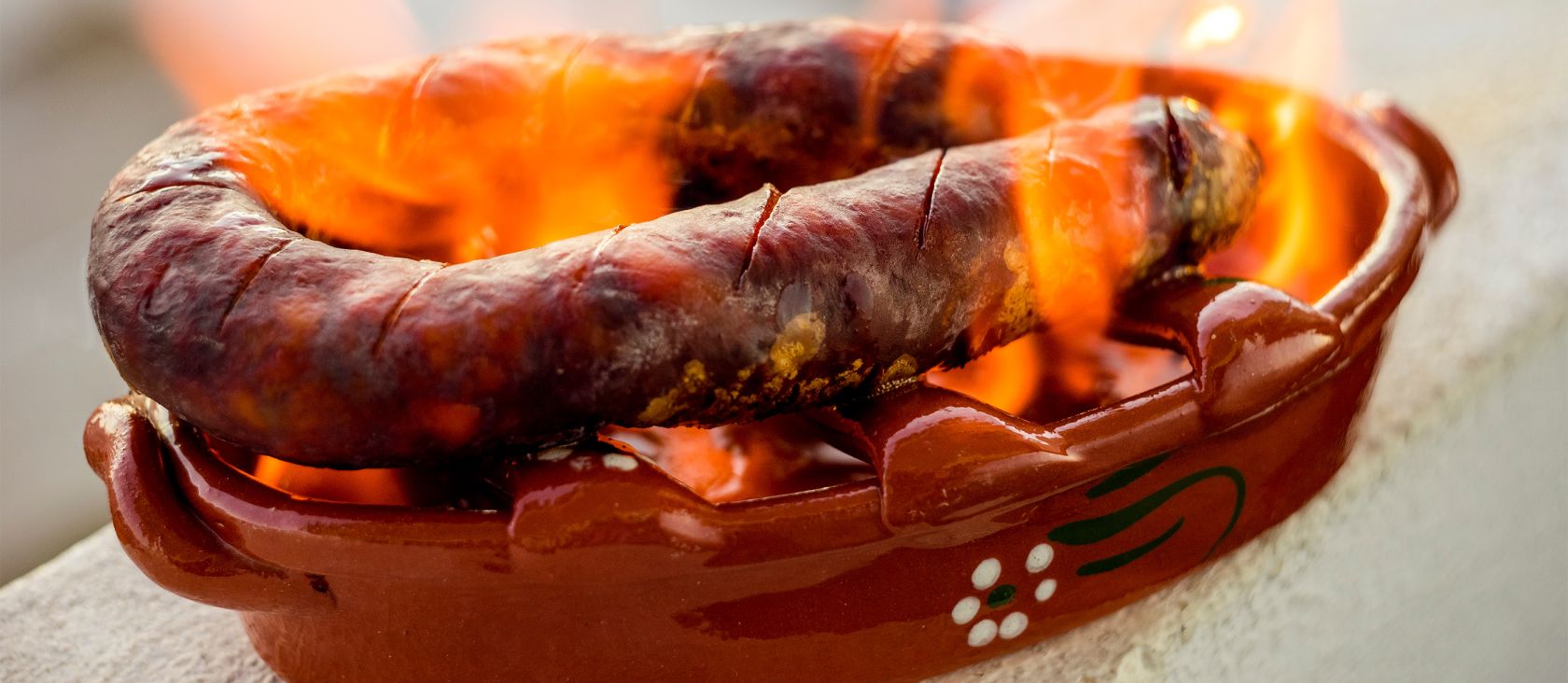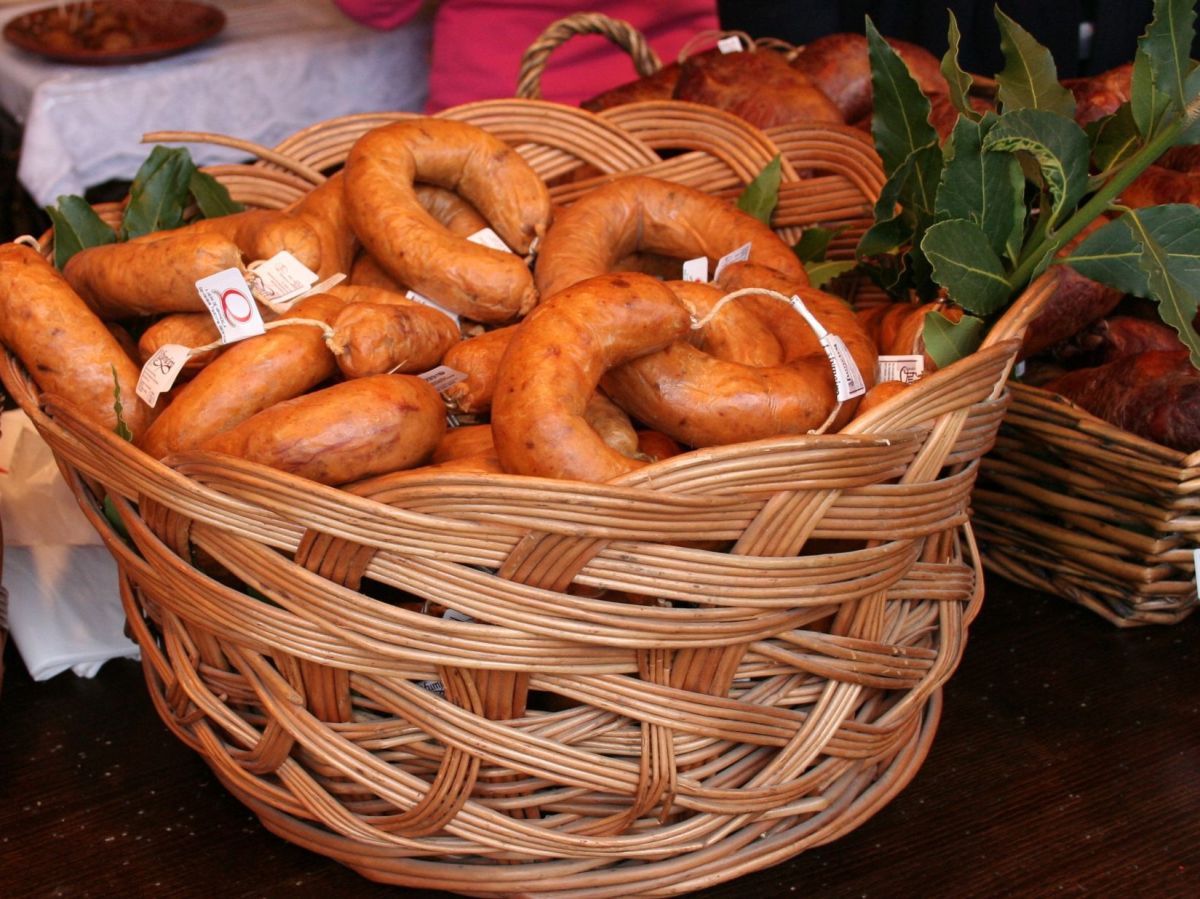If there is something that Portuguese cuisine has given the world, it is their version of the sausage. Sausages are usually (but not always) made from ground or chopped meat, and are mixed with other ingredients, notably spices, fats, and fillers, and formed into a cylindrical or ‘sausage’ shape.
Bangers and Mash
Bangers and Mash is a traditional, cheap and cheerful English meal – cooked sausages accompanied by mashed potatoes. The origin of the term ‘banger’ for this popular dish dates back to the early 20th century during World War I, when meat was scarce - sausages were made with a high proportion of water, which caused them to pop or ‘bang’ when cooked over a high heat. The ‘poor man’s sausage’ was developed during World War 2 when meat was rationed, and either doubled its volume by fillers or the meat was totally replaced by fillers, using bread or cereals combined with seasonings. These days, meatless sausages are a popular option for vegetarians using plant-based proteins, or Quorn, made from fermenting a fungus called Fusarium venenatum to produce a filamentous meat-like product called mycoprotein.
Not one person invented the sausage
In Ancient Mesopotamia around 3,100 BCE, sausages were apparently invented as a way to preserve meat, and eventually evolved into the diverse culinary ‘art’ we see today. They were typically made by grinding meat and stuffing it into animal intestines (sheep, pigs or cattle), and a combination of salting, drying, fermentation, and smoking inhibited microbial growth and reduced moisture, creating an environment inhospitable to spoilage. Fermentation also helped preserve meat and develop flavour, and smoking added further protection through its chemical compounds and aided the reduction of moisture, and of course, added an additional taste.
Skins from artificial materials like collagen (from animal hides), cellulose (from wood or cotton), or various plastics are used for sausage skins these days, but natural casings are still considered the best by some, while synthetic collagen and cellulose casings offer advantages in consistency and cost.
Now to Portuguese Sausages
The tradition in Portugal also stemmed from the need to preserve meat after the annual slaughter of pigs, before the invention of refrigeration.
Portuguese sausages, known as enchidos and fumados, are a diverse range of cured meats and smoked sausages, including pork-based varieties like Chouriço (paprika-infused) and Linguiça (garlicky and smoky), and non-pork options such as Alheira (made with poultry and bread) and Farinheira (a smoked flour and pork fat sausage), and can be cooked differently.
Linguiça and Chouriço are similar – the former being fresh or cured pork sausage seasoned with garlic, onion, and paprika, known for its smoky and spicy flavour, and the latter additionally intensely flavoured with paprika and sometimes wine, used in many traditional dishes. If dining out, the versatile chouriço can be cooked at your table and is called chouriço assado (baked chouriço) or chouriço à bombeiro (fireman’s sausage). In this traditional preparation, the partially sliced sausage is placed on a clay dish, and flaming alcohol is used to cook and char it, creating a crispy exterior and intensifying its smoky, red characteristics. It can be eaten cold and without any further cooking if it is the cured, hard, and dry variation, but the fresh variety must be fully cooked to prevent illness.

Alheira is a traditional northern Portuguese sausage made from a blend of poultry meat, pork, olive oil, bread, and seasonings. It's also made with other game meats like pheasant or duck, and its signature garlicky, smoky, and earthy aroma comes from being smoked. Here’s something I didn’t know. In the 15th Century, Portuguese Jews invented this originally pork-free sausage to deceive the Inquisition. Since they couldn't eat pork, they made sausages with other kinds of meat like poultry and game, adding bread for texture.
There are many others, and it might be hard to find a meat dish in Portugal without at least one kind of traditional Portuguese sausage. You can find them baked in the feijoada (bean stew), or even mixed in soups like caldo verde.
‘Sausage or sausage?’ seems like a trick question – the word was first used in English in the mid-15th century, spelled (and probably pronounced) sawsyge!
Marilyn writes regularly for The Portugal News, and has lived in the Algarve for some years. A dog-lover, she has lived in Ireland, UK, Bermuda and the Isle of Man.

















My experience with supermarket bought and some restaurants portuguese sausages is that they contain large pieces of inedible gristle. Would be interested in where to get gristle free Portuguese sausages.
By David Clark from Algarve on 29 Sep 2025, 06:48